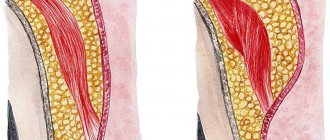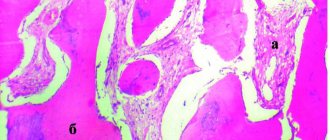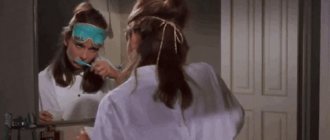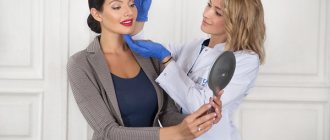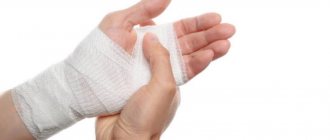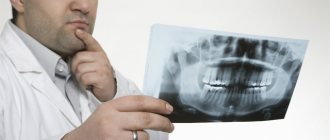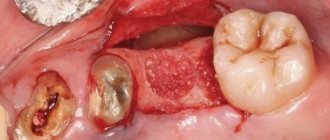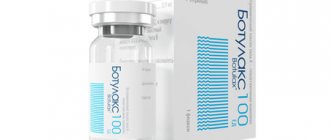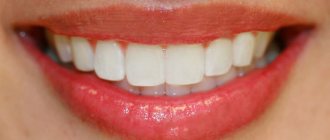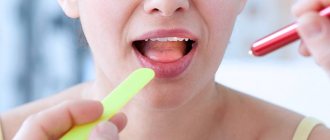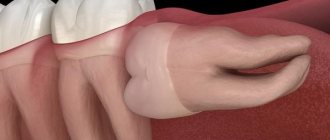Bruxism and hypertonicity of the masticatory muscles are inextricably linked processes. Bruxism is a condition when the muscles of the jaw involuntarily spasm, as a result of which a person begins to grind his teeth. There is an increased tone of the masticatory muscles.
Very often, this problem becomes a serious obstacle to dental procedures, such as implantation, prosthetics, and installation of veneers. Bruxism can interfere with quality orthodontic treatment. Increased tone of the jaw muscles overloads the implants, and dentures are destroyed much faster.
Bruxism also has a negative effect on “native” teeth. The enamel is damaged and worn away, and the teeth become loose. Therefore, if such a problem arises, it is necessary to look for ways to solve it. Thanks to modern medicine, you can get rid of bruxism for a long time.
Symptoms of bruxism and the main causes of hypertonicity:
- the surface of the teeth grinds down, they become flatter;
- the enamel is damaged, fillings fall out, teeth begin to loosen, their integrity is violated, the gums become raw and bleed;
- crunching and clicking appears in the jaw when opening and chewing;
- teeth grinding occurs when a person sleeps;
- it is difficult to open and close your mouth, you feel tired and overstrained masticatory muscles;
- you often unconsciously clench your jaw, most of the time they are tense;
- malocclusions appear;
- the lower part of the face takes on a square shape;
- posture worsens.
How to prevent trismus
There are 4 main ways to prevent trismus:
- massage your jaw muscles;
- train your jaw muscles;
- maintain good posture;
- Maintain proper oral hygiene.
This should be done even if there are no symptoms of trismus to prevent it. Follow the directions in the section below. If you have had surgery, ask your healthcare provider if it is safe before you have surgery.
You may need a timer or watch to help you hold the stretching position for the required amount of time. Breathe normally and do not hold your breath. If you feel pain, numbness, or tingling, stop immediately and call your healthcare provider.
Massage your jaw muscles
Press your index and middle fingers against your cheekbone. Use your fingers to massage the masseter muscle, which is attached to the lower jaw (see Figure 3). As you move your fingers, look for areas that are tender or tight. Massage these areas with circular movements of your fingers for 30 seconds. Do this 2-3 times a day.
Try not to clench your jaw when you are stressed or out of habit. This will help relax your jaw muscles.
Figure 3. Massage the jaw muscles
Train your jaw muscles
Perform these exercises 3 times every day. You can do them standing or sitting. Use a mirror to help you do the exercises correctly.
These exercises will help stretch the muscles well, but should not cause pain. If an exercise causes pain or discomfort, try doing it with less effort. If pain or discomfort persists, contact your healthcare provider.
Range of motion and stretching exercises
Your head should remain in one position while performing these exercises. Repeat these steps 5 times.
- Open your mouth as wide as possible until you feel a good stretch but no pain (see Figure 4).
Hold this position for 10 seconds. Figure 4. Opening your mouth as wide as possible - Move your lower jaw to the left (see Figure 5). Hold this position for 3 seconds.
- Move your lower jaw to the right (see Figure 6). Hold this position for 3 seconds.
Figure 5. Jaw shift to the leftFigure 6. Jaw shift to the right
- Make circular movements with your lower jaw to the left.
- Make circular movements with your lower jaw to the right.
Passive stretching exercise
Figure 7. Press your thumb and index finger against your teeth.
Repeat these steps 5 times.
- Press your thumb against your upper teeth in the middle of your jaw.
- Press the index finger of your other hand against your lower teeth in the middle of your jaw (see Figure 7).
- Open your mouth as wide as possible. Place additional emphasis with your fingers so that your mouth does not close. You should feel a slight stretch, but not pain. Hold this position for ______ seconds.
Maintain proper posture
Correct posture means sitting and standing with your ears, shoulders, hips, knees and ankles aligned horizontally (see Figure 8). To have correct posture, it is necessary to maintain good tone and stretch in the muscles of the neck and shoulders. The following exercises will help you with this.
Figure 8. Correct posture
Do them 2 times every day. You can do them standing or sitting with your arms at your side.
Neck stretch
Repeat these steps 5 times. Hold each stretch for 30 seconds.
- Tilt your head forward (see Figure 9).
- Tilt your head back (see Figure 10).
Figure 9. Head tilt forwardFigure 10. Head tilt back
- Turn your head to the right (see Figure 11).
- Turn your head to the left (see Figure 12).
Figure 11. Turning the head to the rightFigure 12. Turning the head to the left
- Tilt your head, trying to bring your left ear closer to your left shoulder (see Figure 13).
- Tilt your head, trying to bring your right ear closer to your right shoulder (see Figure 14).
Figure 13. Head tilt to the leftFigure 14. Head tilt to the right
Chin retraction
Figure 15. Retraction of the chin when pulling the head back.
Repeat these steps 5 times.
- Looking forward, tuck your chin.
- Pull your head back so that your ears are level with your shoulders (see Figure 15). Stay in this position for 3 seconds.
Scapula compression
Repeat these steps 5 times.
- Tuck your chin in as described in the exercise above.
- Squeeze and squeeze your shoulder blades together as hard as possible (see Figure 16).
- Stay in this position for 3 seconds.
Figure 16. Squeezing the shoulder blades together
Maintain proper oral hygiene
- Brush your teeth and tongue in the morning after sleep, after every meal and before bed.
- If you have removable dentures, remove and clean them every time you brush your teeth. Don't go to bed with dentures in your mouth.
- Floss your teeth once a day before bed.
to come back to the beginning
Botulinum therapy as a method of treating bruxism
Botulinum therapy is effectively used to relieve overstrain in the masticatory muscles, fights bruxism and can relieve involuntary teeth grinding at night.
In medicine, as in cosmetology, botulinum toxin type A is used. It is able to immobilize a muscle or relieve tension in it, acting locally. This effect lasts only for a certain period of time. But during this time the body manages to get used to the new state, and the overstrain disappears completely.
Botulinum toxin type A is a neurotoxin produced by the bacteria Clostridium botulinum. It is capable of blocking impulses from the central nervous system sent to the muscles. In fact, botulinum toxin paralyzes them, breaking the connection between muscle fibers and the brain.
The drug is injected into the required areas, so it has an effect exclusively on the desired areas. Dosages of butolotoxin are completely safe, and its effect is reversible. After six months, it is completely eliminated from the patient’s tissues.
About trismus
Trismus can occur at any time, immediately after or even years after treatment. This condition may occur in the following cases:
- if you have a tumor affecting the bones, muscles and nerves that control the opening of your mouth;
- after surgery on the head and neck organs;
- after radiation therapy in the head and neck area.
Trismus can occur when fibrosis (scarring) develops during the healing process of tissue after surgery. In addition, fibrosis may worsen years after radiotherapy.
If you cannot open your mouth wide enough, it will be difficult for the health care provider to examine your mouth. In this regard, problems may also arise with:
- oral hygiene (keeping the mouth clean and brushing teeth), which can lead to bad breath, tooth decay and oral infections;
- chewing and swallowing, which may make it difficult for you to eat and drink;
- speech;
- kisses;
- insertion of a breathing tube, for example if you ever need general anesthesia (a drug given to keep you asleep during an operation or procedure);
- carrying out routine dental treatment.
When trismus occurs, its treatment is very difficult. This is why it is important to prevent trismus and treat the condition as early as possible.
to come back to the beginning
Main stages of treatment
The first step is preparation for the procedure. It's simple. For a few days, it is necessary to eliminate alcoholic beverages from the diet, and also reduce caffeine consumption. Before the procedure, you should not take antibiotics or blood thinners.
The second step is the introduction of butolotoxin. The procedure lasts about twenty minutes. The required dose is divided into three to four injections. The injection needles are very thin, so the procedure is virtually painless.
The third step is the rehabilitation period. Butolotoxin acts instantly, but gains its full strength after two weeks. After injections, it is not recommended to overheat or cool the treated areas. Sports and facial massage should be excluded.
Clinical picture
Parafunction of the masticatory muscles (bruxism) is characterized by the following symptoms:
- clenching of teeth, their creaking during emotional stress;
- moving the lower jaw forward, to the other side;
- placing the tongue between the teeth, biting the tongue and lips;
- partial adentia (absence of one or more dental units);
- deformation of the enamel near the gums (wedge-shaped defect);
- pathological abrasion of teeth;
- rhythmic movements of the tongue, muscles under the jaw;
- fatigue of the masticatory muscles after waking up;
- crunching, clicking of the lower jaw during movement.
Oromandibular dystonia (OMD) manifests itself in the following symptoms:
- dystonic trismus - spasm of the muscles responsible for mandibular movement;
- bruxism, hyperactivity of the masticatory muscles;
- blepharospasm (involuntary blinking);
- spastic torticollis (uncontrolled contraction of the neck muscles) in mild to moderate form;
- dystonic asymmetric tremor (unconscious vibration) of the head, hands.
Botulinum toxin injection
Botox injections are administered to patients diagnosed with bruxism or OMD for further therapy and for aesthetic purposes.
The drug is injected externally into four facial muscles (masseter, temporal, medial, pterygoid) at several points - from 4 to 8 injections. One or two injections are given from the mouth.
If there is obvious asymmetry of the face on the larger side, an increased dose of the drug is administered.
Implantation for bruxism
Implants can be placed if an integrated approach has been taken to the procedure. In cases where the dental system has not worked correctly for a long period of time, dentists perform treatment using complex implantation.
If excessive tension in the jaw muscles was caused by a reason such as psychosomatics, then the patient is referred for examination to a specialized specialist. Only then can you begin to restore your teeth.
Diagnostics
Early cases of hemifacial spasm are sometimes difficult to distinguish from facial myokymia, tics or myoclonus, which may be caused by pathological processes in the cerebral cortex or brainstem. In such cases, neurophysiological testing is the most valuable diagnostic method.
Wide and variable synkinesis on eyeblink tests and high-frequency discharges on electromyography (EMG) with associated clinical manifestations are diagnostic criteria for hemifacial spasm. Stimulation of one branch of the facial nerve can spread and cause a response in the muscle innervated by another branch. Synkinesia is absent in essential blepharospasm, dystonia or epilepsy. Needle myography shows irregular, short, high-frequency burst potentials (150-400 Hz) of motor units that correlate with clinically observed facial movements.
Visualization methods
Magnetic resonance imaging is the diagnostic method of choice when there is a need to exclude compression effects. Angiography of the cerebral vessels is generally of little value in the diagnosis of hemifacial spasm. Ecstatic blood vessels are rarely identified, and these vessel findings may be difficult to correlate with nerve effects. Performing angiography and/or magnetic resonance angiography is typically used to perform surgical vascular decompression.
Prevention of bruxism
Preventive measures for hypertonicity of the masticatory muscles of the jaw imply measures that can prevent bruxism. Treatment of this disease without diagnosis and examination by a qualified specialist can be hazardous to health. As soon as you notice the first signs of this pathology, you need to consult a doctor as soon as possible. He will prescribe diagnostics that will help identify a possible problem and effectively eliminate it.
The patient may need to be examined by specialists such as a neurologist or psychotherapist. Increased tone of the masticatory muscles has different etiologies. Doctors in these areas can prescribe various treatments, such as physical therapy, magnesium-based medications. All this is decided on an individual basis.
Preventative measures may help if approved by the patient's physician. You can easily massage the cramped areas. There is a set of exercises that can reduce the manifestations of bruxism. They must be done daily before going to bed.
Stressful situations must be avoided. You should rest more, get enough sleep, and spend a lot of time outdoors. Avoid caffeine and take baths with herbs that have a sedative effect. These measures will be an excellent prevention of muscle spasms, and will also enhance the effect of complex treatment.
Contact the Denta-Labor dental laboratory for solutions to issues regarding the protection of your teeth during bruxism.
Jaw Information
The jaws are a pair of bones that form the base of the mouth and teeth (see Figure 1).
- The maxilla is the upper jaw bone.
- The mandible is the lower jaw bone.
- The temporomandibular joint is where the lower jaw attaches to the skull.
- The masseter muscle is the muscle that connects the lower jaw to the skull.
Figure 1. Bones and muscles of the jaws
The opening and closing of the mouth is controlled by many muscles and nerves located around the jaws. Most people can open their mouth 35–55 millimeters (1.4–2.2 inches), which is the width of three fingers (see Figure 2).
Figure 2. Normal open mouth height
to come back to the beginning
Symptoms of paratonsillar abscess
The typical clinical manifestation of PTA is severe sore throat (usually unilateral), fever, and muffled voice. Patients may also complain of drooling and difficulty swallowing.
Trismus (spasm of the masticatory muscles), associated with irritation and reflex spasm of the internal pterygoid muscle, occurs in almost 2/3 of patients and is an important distinguishing feature of PTA in comparison with severe acute tonsillopharyngitis. Patients may also complain of neck swelling and ear pain on the affected side.
What can you do at home if:
Head muscle spasms
To relieve spasm and pain, you can take aspirin, a painkiller tablet like Ibuprofen, or a painkiller in powder form (for example, Nimesil). Give yourself peace of mind. You can try pressing trigger points and stretching your earlobes.
Jaw muscle spasm
If trismus manifests itself, before the doctor arrives, you can self-massage the masticatory muscles, accelerating the blood in them, alternately pressing on the muscles constrained by spasm. It is also possible to use compresses (alternate warm and cold compresses, apply them to the lower third of the face).
Cervical muscle spasms
Make gentle rotational movements with your head, lower and lift it (without throwing it back too much), turn it right and left. You can try stretching your neck muscles with your hands. Warm compresses and rubbing are effective.
*Attention! The information is for informational purposes only and does not constitute medical advice.
Reviews
Tatiana
I’m happy to be among your guests at the clinic, I enjoy our communication, I’m grateful for your super professionalism, for giving beauty and a sense of confidence in your professional actions, protection from “age-related changes”?! I admire the combination of beauty, tenderness, intelligence, and fortitude! With respect, gratitude and love???
Olga
A modern clinic with friendly staff and highly professional doctors. I received a consultation on facial rejuvenation, a procedure was proposed that completely satisfied me, the consultation was very detailed. Satisfied with the visit.
Irina Nikolayevna
Clean, comfortable clinic, polite staff, professional specialists. The services are of excellent quality, I have been using the services for almost a year and a half, and have never had any problems with parking.
Anna and Alexander
Marina Vladimirovna, we wanted to express our gratitude to you for the Fotona 2D rejuvenation procedure. The skin is just super, and the scars on both of them are noticeably better. My husband says every day how beautiful and smooth his skin is, his nasolabial folds have disappeared. We are very pleased, we will come to you again!
Treatment of peritonsillar abscess
In case of a complicated course, children (especially young children) are indicated for hospitalization and treatment in a hospital setting.
The main treatment method for PTA is systemic antibacterial therapy. In severe cases, severe intoxication, difficulty swallowing, nausea, antibacterial therapy is prescribed parenterally (bypassing the gastrointestinal tract) with subsequent transfer to oral forms of drugs - until the completion of the 14-day course of treatment. Courses of antibiotic therapy for less than 10 days increase the likelihood of disease relapse.
After prescribing systemic antibiotic therapy, dynamic observation for 24 hours is recommended. It is acceptable in patients with suspected paratonsillitis, without obvious signs of PTA, without signs of airway obstruction, sepsis, severe spasm of the masticatory muscles, or other signs of a complicated course of the disease. And also in children under 7 years of age with small abscesses and rare episodes of acute tonsillopharyngitis in history.
Studies have shown that systemic antibiotic therapy is effective even without draining the abscess. According to available data, 50% of children responded to systemic antibiotic therapy and did not require abscess drainage or tonsillectomy.
Systemic antibacterial therapy should include antibiotics active against GABHS, Staphylococcus aureus and respiratory anaerobes. For PTA, amoxicillin-clavulanate, ampicillin-sulbactam, and clindamycin are most often prescribed. If there is no or severe response, vancomycin or linezolid is added to treatment to ensure optimal coverage of potentially resistant Gram-positive cocci.
